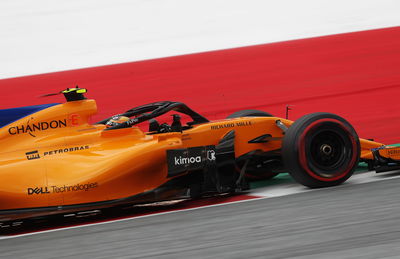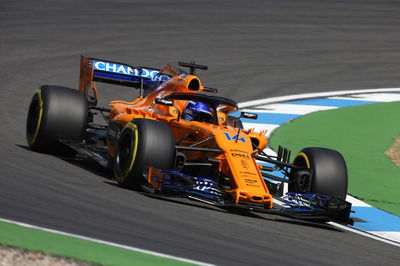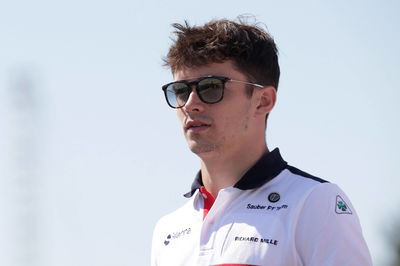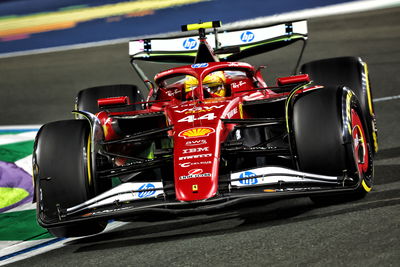How small steps have given McLaren a big off-track boost
Two weeks ago, I asked how to solve a problem like McLaren. It turns out that McLaren has been busily working on solving the problems itself.

Two weeks ago, I asked how to solve a problem like McLaren. It turns out that McLaren has been busily working on solving the problems itself.
Ignore the changes of leadership, the technical shake-ups, and all of the other recent signs of a team in transition. While McLaren might have had to write off this season on the racing front - any improvements now will fall into the ‘too little, too late’ category, with the season now half-finished - the Woking racers have quietly been working on a new approach to sponsorship that is beginning to pay dividends.
In the Ron Dennis era, McLaren was a front-running team with front-running sponsors. Dennis often spoke of the need to have one big-ticket sponsor, a method he preferred to peppering the bodywork with a collection of smaller logos. But towards the end of his time in charge, even he had begun to acknowledge the changing face of sports sponsorship and the need for a new approach.
“The era of the title sponsor in Formula One has probably passed,” Dennis said in 2016. “That is because Formula One sponsors today want and demand a far more complicated series of rights than ever before, focused principally on activation strategies meticulously tailored to meet their marketing objectives. In other words, the days when you slapped a big logo on the side of your car and called it your title sponsor are long gone.”
That newer approach - one focused on a multiplicity of symbiotic partnerships - is one that McLaren has embraced with verve in the past two years, with one senior team official telling me in Silverstone that Woking had brought in £25 million of new deals since the end of 2017 alone.
Those deals - with Dell, Petrobras, CNBC, Airgain, Logitech, and HTC - are all long-term partnerships of around five or six years in length, and were deals brokered without visibility as the end goal.
The spread of social media and endless customer engagement and interactivity has meant that the ‘old-school’ methods of adding logos and going racing no longer meets the objectives of either race team or partner. The rules have changed, and the current trend in sponsorship is for story-telling, with visibility now seen as an effectively secondary.
Instead, symbiosis is the name of the game. McLaren’s competitors have adopted a similar approach with their technical partners -- Mercedes’ relationship with Qualcomm enabled the Silver Arrows to become the first team to use wireless 4G to transmit telemetry data from car to pit wall without plugging in, saving vital seconds in the pits.
Similarly, Renault work with Microsoft Dynamics to develop machine-learning tools and artificial intelligence designed to act as an additional team member, analysing data much faster than humans are able to, and with superior pattern recognition.
Cooperating with partners and sponsors is nothing new for McLaren, of course - the team has long worked with companies like GlaxoSmithKline to help boost their operational efficiency, using F1 methods to streamline corporate processes.

With its growing collection of smaller partners, McLaren is in ruder health than it might first appear. But the team is still looking for a bigger deal, as CEO Zak Brown said earlier this year.
“We don’t want a title sponsor per se,” Brown said. “What we would like is a principal partner, so title-level branding as everyone in here would think of it. But we want to retain our name McLaren, so we are not really interested in selling the name to the team.
“Sponsorship takes a long time to get. We brought on five new partners during the off-season, which is more than any other team, so I’m quite happy with our progress. It’ll take time. Obviously the more money we have brought in we can put into the racing team but we haven’t budgeted for [a title sponsor] this year, so we are on course financially.”
Some of the teams on the current grid have serious sponsorship deals that look similar to the title sponsorships of old -- Mercedes and Petronas, Philip Morris and Ferrari, or Force India and BWT. But what looks like a duck is not always a duck, and such is the case here.
Force India’s BWT deal has the visual impact of a title sponsorship, turning the formerly green and orange racers baby pink. But the price of the partnership was far lower than similar deals in the good old days. Mercedes has its livery influenced by the colours of the Petronas brand, but their relationship is an old-fashioned technical partnership, with the fuel and lubricants giant using F1 as an effective test bed for its R&D department.
As for Ferrari and Philip Morris, that is a particularly special relationship, and one that has managed to survive the ban on tobacco sponsorship thanks to the way in which the partnership has been managed. Ferrari might benefit from tobacco money, but they’re not actively advertising the fact. Except in Monaco...











